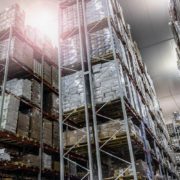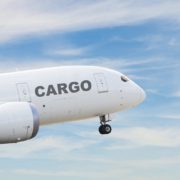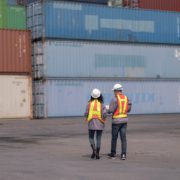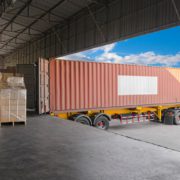Executive Summary
For pharmaceutical manufacturers, CDMOs, and global freight managers, the most overlooked risk in the supply chain often hides at the very end: the final mile. Whether delivering a controlled substance to a packaging line, transferring high-value biologics to an airport cargo hold, or connecting a time-definite shipment to a refrigerated distribution hub, the final leg of pharmaceutical transport is where timing, temperature, and precision converge. And where a single delay can compromise regulatory integrity—or worse, product viability.
This paper outlines how Euro-American Worldwide Logistics designs, executes, and safeguards final-mile deliveries with GMP-level control, even when delivery windows are shrinking and margin for error is zero.
Why Final-Mile Failures Cost More Than You Think
In pharma logistics, it’s easy to focus on origin-to-destination moves—overseas airfreight, customs clearance, or storage. But in 2025, carriers, distributors, and regulatory agencies have placed increasing accountability on the short links that complete the chain.
Some common, costly examples:
- Missed dock appointments leading to temperature excursion investigations
- Airport lane congestion resulting in missed air cargo cutoffs
- Facility handoffs that trigger delays in lot release, labeling, or sterile fill-finish timelines
- Emergency re-routes due to lane closures or extreme weather without validated backup plans
Unlike retail or consumer sectors, pharmaceutical deliveries often rely on pre-scheduled delivery windows, often measured in minutes—not hours. When carriers miss those windows, manufacturers don’t just risk a late shipment—they risk product spoilage, rescheduling of validated processes, or censure from regulatory bodies.
How Euro-American Solves Final-Mile Risk for Life Sciences
At Euro-American, we’ve built final-mile execution around the principles of pharma-grade control and visibility. Here’s how we do it:
- Timed Dock Scheduling with Pre-Validation: We don’t guess windows—we confirm them. Our team coordinates with receiving facilities in advance, ensuring secure dock availability, driver ID verification, and rapid offloading procedures. This minimizes dwell time and keeps cold chain protocols intact.
- Temperature-Protected Transfer: Whether ambient, refrigerated, or frozen, our final-mile fleet partners use validated packaging, passive thermal protection, and climate-controlled units. This ensures that your product arrives within spec, even on multi-stop routes.
- Redundancy & Contingency Planning: Every shipment has a Plan B. Our routing model includes alternate carriers, pre-cleared backup lanes, and emergency protocols for airport holdovers, mechanical failure, or regional weather disruptions.
- Real-Time Location & Compliance Monitoring: Through integration with your ERP or QMS systems, we provide real-time data on shipment status, temperature integrity, and ETA deviation. If something veers off plan, your team is the first to know—and we’re already executing recovery steps.
2025 Trends Driving Urgency in Final-Mile Strategy
- More Therapies, Tighter Schedules: With biologics, GLP-1s, and personalized meds in high demand, manufacturing windows are shrinking.
- Carrier Scoring: Manufacturers now factor final-mile reliability into vendor performance metrics. Missed delivery = lower ratings.
- FDA Enforcement: The FDA has increased scrutiny of “last-point” product handoffs and transport validations in 483 and warning letters.
- Temperature Accountability: Logistics failures that trigger excursions are being flagged faster—and traced back to service providers.
What Life Sciences Leaders Should Do Now
If your last-mile strategy relies on standard couriers, unvalidated truck transfers, or passive communication, it’s time for a reset. In Q2 2025, final-mile delivery is no longer “just the driver’s job”—it’s a critical control point in your GMP and GDP logistics program.
Work with a Logistics Partner Who Understands the Stakes
Euro-American Worldwide Logistics offers:
- Final-mile delivery engineered for pharmaceutical standards
- 24/7 visibility and risk response
- Seamless integration with temperature-controlled storage and customs clearance
- Proven performance delivering to and from New England, Northeast, and East Coast air hubs
Contact Euro-American today to discuss how we can safeguard your most sensitive shipments.










